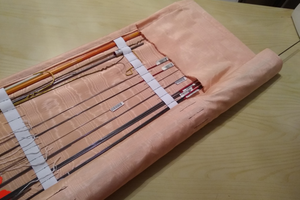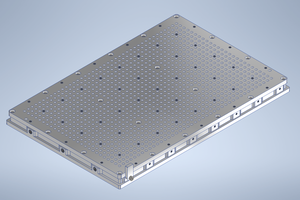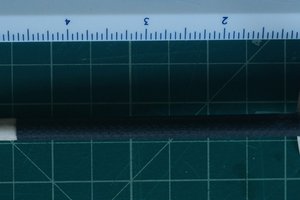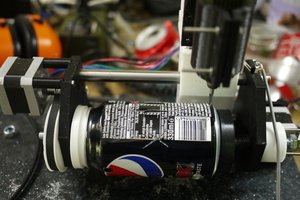This is one of the components for a CNC wood milling machine that got shelved when the project the CNC was needed for got cancelled. Nut-blocks were built and tested, but not used in production. No photos, but I found a diagram I made to email someone to show how it assembled.
It's a simple Nut-Block and uses threaded rod. It will work with cheap steel threaded rod, but harder steel means less friction and longer life, and usually more consistent threading for better accuracy.
The nuts are cut from Delrin AF (500AF or 100AF), which is embedded with Teflon, for "self-lubricating", low friction and low wear on dry steel (don't lubricate the steel lead screw). Due to dynamic vs. static coefficients of friction, with 100AF, slip-stick is extremely low; with 500AF you won't be able to tell if it's low or no slip-stick. Use either. There were competing plastics with embedded ptfe available back when; I didn't explore them.
Don't breath the dust from cutting or drilling Delrin AF, just because and because it's got Teflon in it.
Simply cut your nut from the Delrin AF stock, drill & tap the hole for the threaded rod lead screw. For first try to check for fit, use a pre-drill bit one size smaller than is recommended for tapping metal. Drill the holes for bolting the nuts to the nut-block. (of course you could have Delrin AF machined to match a real lead screw)
You'll have to determine the thickness of nut to make, depending on the force you'll be applying and the mass you'll be moving. I went with 3/8" thick on 1/4" rod, then 3/8" thick on 3/8" rod, as I felt more comfortable with more contact area.
Once you are done cutting, drilling & tapping the Delrin AF, for best results (and testing fit) it should be heat treated ("tempered") before use. (I can't find the instructions online (DuPont's site is a nightmare now), but it was done at a low temperature in an oven. I'll post those instructions once I find them.) Edit: my bad. It's annealing, not tempering, "not usually required" and done for dimensional stability. Back in ~2002, it was also recomended to address the fine white "hairs" that may be present on machined surfaces, which may affect fit.
Air Annealing: In an air circulating oven, the parts are heated to 160±3°C (320±5°F) for 30 min plus 5 min/1 mm (0.04 in) of wall thickness. It is important that parts be uniformly heated and the oven cap-able of controlling the circulating air temperature to ±3°C (±5°F).
Partial Annealing: Partial annealing is sometimes adequate instead of full annealing described above. Partial annealing is accomplished by raising the temperature of the part 28°C (50°F) above the maximum-use temperature for a period of 1 hr.
Now test for fit on the lead screw. It should be firm, but not too tight. Firm is not a bad thing, as Delrin AF on dry steel has lower friction with a preload. With no discernible slip-stick, it's very eerie turning Delrin on steel.
View a few nut-block photos online and you'll see how to make the nut-block itself to match your setup. I made my nut-block out of hard maple, as I was experimenting using wood at the time. Assembly is tricky if the nuts securing the backing-nut aren't glued to or countersunk into the nut-block.
Do use a drop of non-permanent thread-locker on the nuts when securing the backing-nut to the nut-block. And again on the nuts setting the preload-nut's preload.
I cut my nuts 3/8" thick from ~2" rod stock, as it was what I had. So the nuts were round and oversized for the job and I used fender washers for the metal plates in the diagram; both were trimmed on the side closest to the contact surface of the nut-block so they'd clear the gantry the nut-block as bolted to.

 Quinn
Quinn
 I'm a maker
I'm a maker
